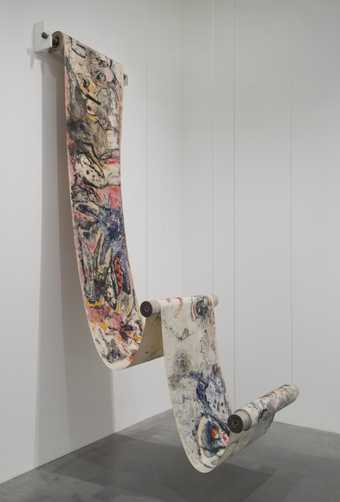In the decades following the Second World War, find out how artists explored a number of radical approaches to painting
In Italy in the late 1950s, Pinot Gallizio produced ‘Industrial Paintings’ on long rolls of canvas, questioning the idea of the painting as a unique object by using the technique of the production line. Other artists enlivened the process of painting with acts of symbolic violence. French artist Niki de Saint Phalle produced works by shooting at a canvas embedded with paint-filled balloons. Though such works were abstract and even playful, they seemed to reflect the memory and ongoing experience of war.
By the 1970s, artists were focusing on the physical structure of the painting. Sam Gilliam abandoned the wooden stretcher and draped his canvas over a hook, knowing that it would never fall in exactly the same way from one installation to the next. Richard Smith created a grid of aluminium poles that he used as the support for a green canvas sewn with various diagonal tapes. At first glance, the white canvas of Michael Buthe’s painting appears to have ripped to pieces, an impression carefully created by the artist who has painstakingly hung, tied and stitched it to the white-painted frame.
Curated by Mark Godfrey
The Doris & Donald Fisher Gallery
É«¿Ø´«Ã½

